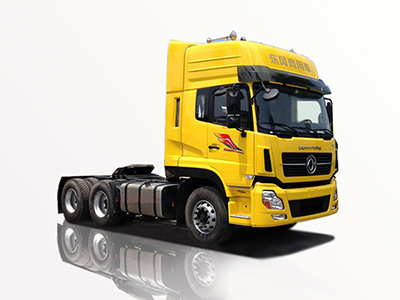The construction and transportation industries have seen significant advancements in productivity tools, and one such tool that has gained attention is the swaploader. For those looking to invest in this versatile equipment, understanding the ins and outs of swaploaders is crucial to making an informed decision. In this guide, we will cover everything you need to know about swaploaders for sale, including types, features, benefits, and buying tips.
What Is a Swaploader?
A swaploader is a piece of equipment commonly used in construction and logistics. It allows the user to quickly interchange truck bodies, including dump bodies, flatbeds, and specialized containers. This versatility makes the swaploader an invaluable tool for industries requiring rapid load changes and high efficiency.
Types of Swaploaders
Understanding the different types of swaploaders available on the market is essential for selecting the right one for your business.
1. Hydraulic Swaploaders
Hydraulic swaploaders use hydraulic systems to facilitate the lifting and lowering of the truck body. They are known for their reliability and ability to handle heavy loads with ease.
2. Mechanical Swaploaders
Mechanical swaploaders operate through a system of gears and pulleys. While generally more cost-effective, they may not offer the same lifting power as hydraulic models.
3. Electric Swaploaders
Electric swaploaders are a newer option on the market, offering a quieter, more environmentally friendly alternative. They are particularly suitable for urban settings where noise pollution is a concern.
Why Invest in a Swaploader?
Investing in a swaploader offers several advantages, making it an attractive option for businesses in various sectors.
Enhanced Efficiency
By allowing for quick body swaps, a swaploader significantly reduces downtime, enabling projects to move faster and meet tight deadlines.
Cost-Effective
Owning a swaploader can reduce operational costs over time. Instead of purchasing multiple trucks for different tasks, a single truck equipped with a swaploader can handle various jobs.
Versatility
Swaploaders are designed for a wide array of applications. From construction to waste management, their ability to switch body types provides unparalleled flexibility.
Key Features to Look For
When evaluating swaploaders for sale, certain features can dictate their performance and suitability for your needs.
Weight Capacity
Ensure the swaploader can handle the weight you expect it to carry. The weight capacity will vary between models, so it’s crucial to match your requirements with the specifications.
Speed of Operation
Efficiency is key in any industry. Look for models that allow for quick body changes to minimize downtime and maximize productivity.
Durability
The harsh conditions of construction and logistics environments can wear down equipment quickly. Choose a swaploader made from high-quality materials designed to withstand heavy use.
Where to Find Swaploaders for Sale
Knowing where to look can save you time and money when searching for swaploaders.
Online Marketplaces
Websites like eBay, Craigslist, and specialized heavy equipment websites often have listings for new and used swaploaders. Make sure to check seller ratings and reviews.
Dealerships
Visiting dealerships that specialize in heavy machinery can provide you with more information and allow you to inspect swaploaders in person.
Auctions
Heavy equipment auctions are another excellent option for finding swaploaders at competitive prices. However, it’s crucial to do your research and understand the auction process.
Financing Options
Purchasing a swaploader can be a significant investment. Fortunately, several financing options can help ease this burden.
Loans from Banks or Credit Unions
Many financial institutions offer loans specifically for purchasing heavy equipment. Compare interest rates and terms before committing.
Lease Options
Leasing is a popular alternative, allowing you to use a swaploader without making a significant upfront investment. However, be sure to consider the long-term costs.
Manufacturer Financing
Some manufacturers offer financing plans for their products. These can come with attractive rates and terms designed to assist buyers in securing their equipment swiftly.
Best Practices for Maintenance
Regular Inspections
Schedule routine inspections to identify potential issues before they become severe problems. Check hydraulic fluids, electrical systems, and overall structural integrity.
Timely Repairs
Address small repairs promptly to prevent them from escalating into larger, costlier issues. Always use original parts to ensure compatibility and reliability.
Operator Training
Providing training for operators can significantly reduce the risk of misuse and accidents, extending the lifespan of the equipment.
Swaploader Reviews and Recommendations
When considering a purchase, reviews and recommendations can help guide your choice.
Customer Feedback
Look for online reviews on reputable heavy equipment forums or social media groups. Users can provide insights into their experiences with various models and brands.
Expert Reviews
Check industry publications and websites that focus on heavy machinery. Experts often compare models and provide insights on performance, reliability, and value.
Frequently Asked Questions (FAQ)
1. What is the average cost of a new swaploader?
The cost of a new swaploader can range from $25,000 to over $100,000, depending on the brand, model, and features.
2. Are used swaploaders worth purchasing?
Used swaploaders can be a great option if you find one in good condition. Always conduct a thorough inspection and request maintenance records before purchasing.
3. How long do swaploaders typically last?
With proper maintenance, a swaploader can last anywhere from 10 to 20 years, depending on usage and conditions.
4. Can I use a swaploader for different truck models?
Most swaploaders are designed for specific truck models, so flexibility varies. Always check compatibility before making a purchase.
5. What additional accessories should I consider for my swaploader?
Consider purchasing additional accessories such as hydraulic ramps, stabilizers, and safety features to improve functionality and safety.
6. How does the warranty work for swaploaders?
Warranties vary by manufacturer. Generally, they cover defects in materials or workmanship, while wear and tear from normal use may not be included.
Conclusion
Investing in a swaploader is a significant decision for any business. By understanding the variety of options available, their benefits, and maintenance tips, you will be better positioned to make the right choice. Whether you are in the construction industry, logistics, or waste management, a swaploader can enhance efficiency and operational effectiveness.





